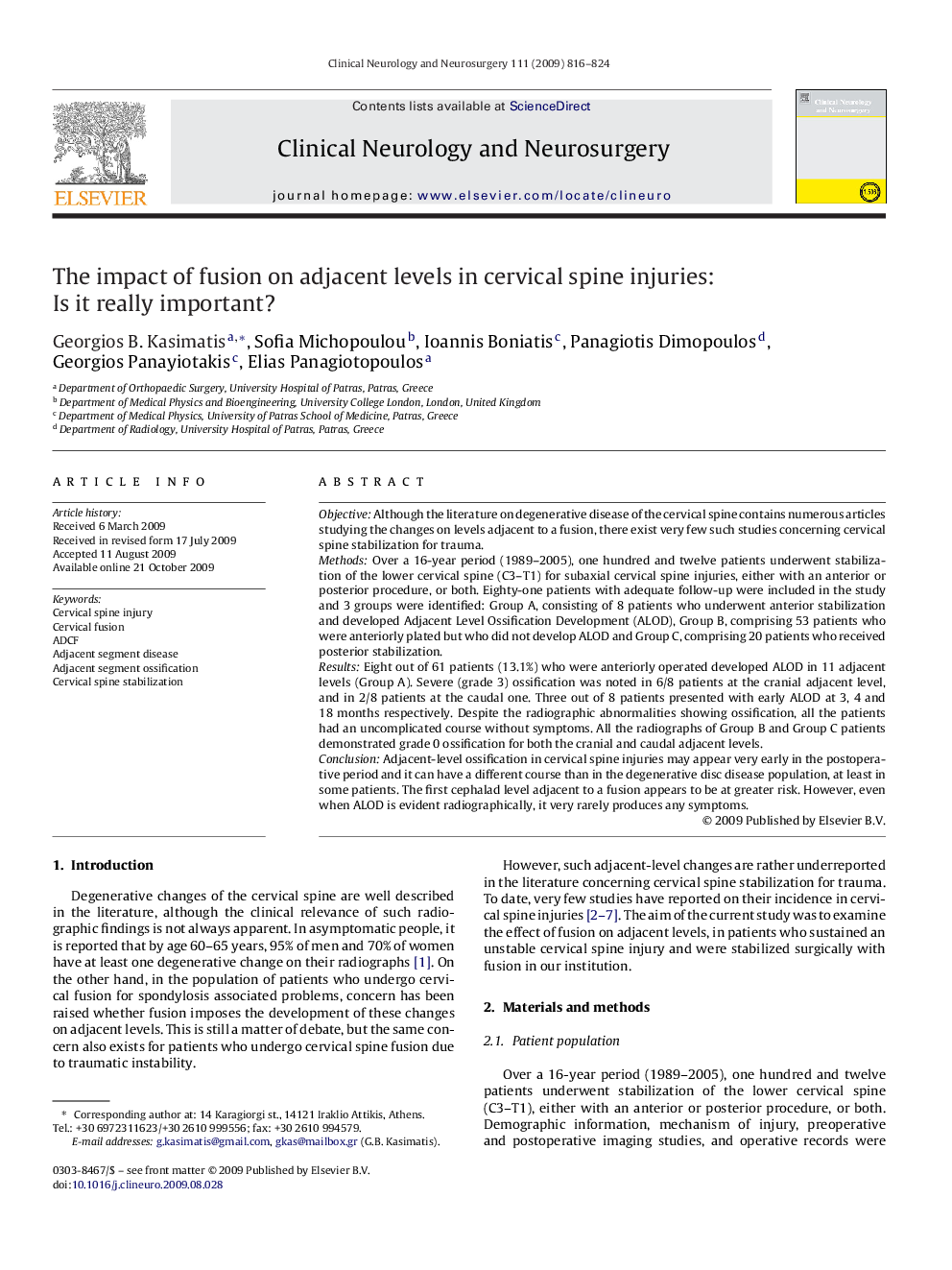| Article ID | Journal | Published Year | Pages | File Type |
|---|---|---|---|---|
| 3041363 | Clinical Neurology and Neurosurgery | 2009 | 9 Pages |
ObjectiveAlthough the literature on degenerative disease of the cervical spine contains numerous articles studying the changes on levels adjacent to a fusion, there exist very few such studies concerning cervical spine stabilization for trauma.MethodsOver a 16-year period (1989–2005), one hundred and twelve patients underwent stabilization of the lower cervical spine (C3–T1) for subaxial cervical spine injuries, either with an anterior or posterior procedure, or both. Eighty-one patients with adequate follow-up were included in the study and 3 groups were identified: Group A, consisting of 8 patients who underwent anterior stabilization and developed Adjacent Level Ossification Development (ALOD), Group B, comprising 53 patients who were anteriorly plated but who did not develop ALOD and Group C, comprising 20 patients who received posterior stabilization.ResultsEight out of 61 patients (13.1%) who were anteriorly operated developed ALOD in 11 adjacent levels (Group A). Severe (grade 3) ossification was noted in 6/8 patients at the cranial adjacent level, and in 2/8 patients at the caudal one. Three out of 8 patients presented with early ALOD at 3, 4 and 18 months respectively. Despite the radiographic abnormalities showing ossification, all the patients had an uncomplicated course without symptoms. All the radiographs of Group B and Group C patients demonstrated grade 0 ossification for both the cranial and caudal adjacent levels.ConclusionAdjacent-level ossification in cervical spine injuries may appear very early in the postoperative period and it can have a different course than in the degenerative disc disease population, at least in some patients. The first cephalad level adjacent to a fusion appears to be at greater risk. However, even when ALOD is evident radiographically, it very rarely produces any symptoms.
